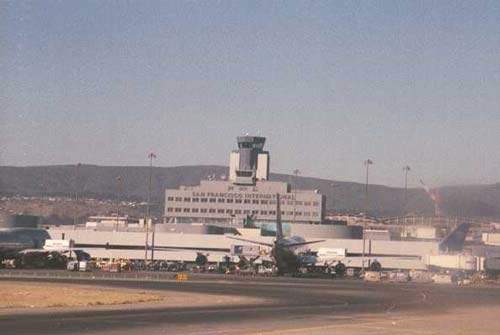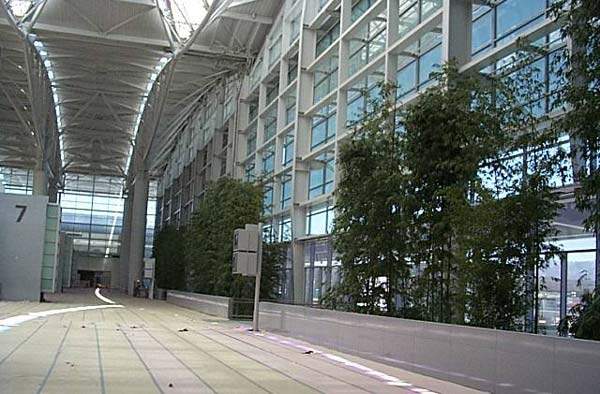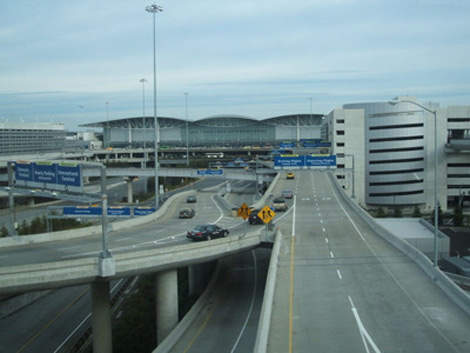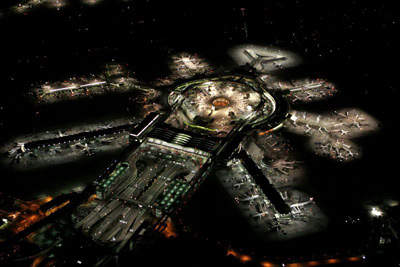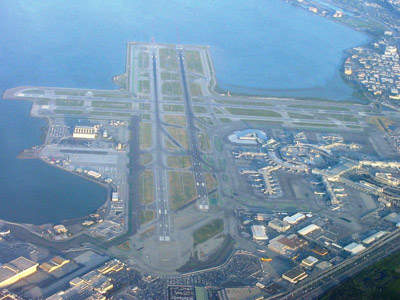San Francisco International Airport (SFO) is an extremely busy airport in San Francisco, California, US. The airport has four runways and is the 23rd largest in the world and 13th largest in the US. The runways are configured so that the airport can conduct up to 60 arriving flight operations per hour. However, due to erratic weather patterns in the area, delays are common. The airport has recorded that only 64% of flights are on time.
New developments
Because of its support for clean air vehicles, SFO adopted a clean air vehicle policy in February 2000. The policy has a goal of 100% clean fuel vehicles in airport and airport-permitted fleets by 2012. In line with the policy, the SFO’s new hydrogen fuelling complex is being established.
Hydrogen fuelling complex
One of the major new developments at SFO is the provision of pure hydrogen and a 20% hydrogen blend with compressed natural gas. This is popularly known as hythane.
Providing pure hydrogen and hythane, the SFO facility will be the first public access refuelling complex. The facility is a collaboration between private sector energy companies such as Linde.
The San Mateo City / County Association of Governments, The Bay Area Air Quality Management District and California Air Resources Board are some of the public sector agencies involved in the collaboration.
SFO signed a memorandum of understanding with the San Mateo City / County Association of Governments to develop hydrogen fuelling infrastructure in 2006. More than 1,800 clean vehicles operate at SFO. These include biofuel buses, natural gas taxis, filtered diesel charter and scheduled buses, shuttles, buses, hybrid rental cars, utility vehicles, electric train cars and aircraft service vehicles.
Funding and location
The SFO facility’s total combined investment is $3.7m. The inclusion of $2.3m in grants from the public sector and $1.4m from the private sector are part of the plan.
SFO’s hydrogen fuelling complex is just a block from the Highway 101 interchange, next to Millbrae Avenue. Entry is from South McDonell Road, which lies inside the SFO periphery.
Patrons
By late 2009 SFO’s new facility was expected to start operations on the hythane blend. Twenty-seven hotel and off-airport parking courtesy shuttles were to be operating in this area. The pure hydrogen station was expected to be completed by 2010, but was delayed due to lack of funding. As of June 2011, the airport was awaiting release of $4.7m in funds for the project. It is planning to complete the project by early 2012. The facility will serve advanced fuel cell autos from four manufacturers, prototype SF MTA buses and a San Mateo County-funded minibus. Other prospective users include airfield mobile lighting which can replace diesel generators.
New terminal
The airport opened a new 2.5 million square foot international terminal in December 2000, worth $1bn. Construction started in 1996, replacing the old Terminal 2, and has 28 gates plus some additional gates on a rotunda A. All but one gate have two jetways and six are designed for super jumbos. A new rental car facility was added in 2003, and an extension of the bay area rapid transit to the international terminal was also completed in 2003.
The terminal houses the main BART station near boarding area G. This was part of a $2.4bn capital expansion project. Since then the emphasis has been to expand, develop and reconfigure the new runways. Expansion is crucial because the airport is losing business to its nearby neighbours San Jose and Oaklands – although San Francisco has the best land connections out of the three.
The international terminal opened in 2000 and has the distinction of being the largest terminal building in North America, constructed on base isolators to protect against earthquake damage. The terminal was designed by Craig W Hartman. Skidmore, Owings & Merrill, Del Campo & Maru Architects, and Michael Willis Associates all worked on the main terminal building while Hellmuth, Obata and Kassabaum (boarding area G) and Gerson/Overstreet Architects were responsible for the design of boarding area A. Parsons carried out the construction work on the international terminal.
To cope with the spiralling demands of its increasing traffic, the airport created an airfield development programme. This required the expansion of the airport runway into the San Francisco Bay (requiring the reclamation of land). This was met with opposition from environmentalists and local people who do not believe the airport would improve even if it were able to build a new runway.
Other works carried out at the airport include the demolition of the outmoded rotunda A in 2007. The area was added to Terminal 1.
In 2008, SFO launched a $383m project to renovate Terminal 2. The terminal was built in 1954 and closed after the international terminal opened in 2000. The 640,000ft2 renovated terminal opened in April 2011. It was awarded the LEED Gold certification by the US Green Business Council making it the first airport in the country to achieve this certification.
Terminal 2 is now home to American Airlines and Virgin America.
Runway reconfiguration
The current runway configuration at SFO consists of four runways. The separation between parallel runways is 750ft. While simultaneous landings can take place on parallel runways in good weather, Federal Aviation Authority (FAA) rules for landing aircraft restrict the airport to one runway in bad weather which can lead to increased delays.
In good weather, SFO can accommodate a maximum of 105 planes an hour; bad weather can reduce that to as few as 65 planes per hour depending on which runways can be used. These numbers include takeoffs and landings.
Another primary motivation for moving runways out into the bay is noise reduction. Noise at airports is a major problem for those who live near airport flight paths. Shifting runways further into the bay reduces the number of people in the CNEL 65 noise level region from around 5,000 to 300, according to SFIA.
The runway reconfiguration programme is a proposal being developed by San Francisco International Airport to modify the layout of its four existing runways. A $200m federally mandated Runway Safety Area project was initiated at the airport in early 2012. It is expected to be completed by fall of 2014.
As well as hoping to solve the problem of excessive delays, the development programme is intended to limit the noise impact on the surrounding area. It is also necessary for the airport to accommodate increasing numbers of larger aircraft. The goals of the programme are to:
- Reduce flight delays during poor weather conditions
- Reduce the noise impact of aircraft operations
- Accommodate larger aircraft
- Achieve net environmental gains for the San Francisco Bay Area (via mitigation)
San Francisco International Airport recognises the environmental importance of San Francisco Bay. Through its commission, the airport has already committed nearly $17m to the restoration of wetlands in the Bay as mitigation to the airport master plan. The commission is fully committed to the continued restoration, enhancement and health of the bay.
One proposal for the extension of the airfield into the bay has been to construct a floating runway (which would be earthquake proof).
Float submitted a proposal to SFIA in 2000; this has been considered by SFIA but the costs have been thought too great and there are environmental issues over casting a shadow on the bottom of the bay (marine ecology may be affected).
Float consists of a consortium of expert companies, including Weidlinger Associates. (structural engineering), Pre Con, (a subsidiary of Blue Circle Industries PLC – concrete forming), Ferma Corporation (general engineering), ECM Assoc (cost estimating), Olivia Chen Consultants (environmental issues).
The floating runway proposal was discussed by a panel of SFO experts in June 2011 and put on hold due to opposition from environmentalists.
Runway alternatives
A feasibility study has identified more than 30 alternative layouts for runways at the airport. A layout has not yet been selected but the airport has identified the five alternatives that are most likely to be chosen:
A3 alternative would only partially meet the airport objectives. It would provide a fairly large delay reduction for prevailing wind conditions and would result in a minor reduction in the number of people most affected by aircraft noise. This alternative requires the least amount of bay fill.
F2 alternative would fully meet the four airport objectives. There would be a large aircraft delay reduction for prevailing wind conditions. It would significantly reduce the noise impact to people living within affected areas. It would require a large amount of fill in the bay and the construction costs would be substantial.
BX refined alternatives also meet airport objectives. It provides separation for both sets of runaways, thereby achieving significant delay reduction. The primary difference from F2 is that BX provides for dual simultaneous Instrument Flight Rules (IFR) landing during all wind conditions. The noise reduction benefits would be significant, similar to those in alternative F2. There would be bay fill impact but the airport is committed to the development of an extensive mitigation programme for this type of alternative.
Do-nothing alternative, where there would not be any cost or bay filling but the situation would stay the same.
No build with improvement alternative means systems and operational improvement would include the use of new technology such as radar and global positioning. These approaches might generate up to 15% aircraft delay reduction. However there would be no reduction of exposure to aircraft noise.
Main contractors
HNTB was selected to evaluate the different runway configurations. ATAC, an expert in airspace modelling, noise and airfield capacity issues. Olivia Chen Consultants, a specialist in utilities master planning at the airport; and Manna Consultants, a key provider of drafting, survey and civil engineering support services, also took part in the planning and evaluation.
VHB was also asked to undertake sustainability planning in conjunction with the City of San Francisco and San Francisco International Airport (Environmental Sustainability Report). This project was part of an effort to instigate an environmental management system (EMS) for the airport.

